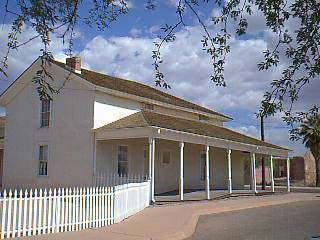[Source: Ken Travous, Arizona Republic My Turn] – You have to hand it to a guy like Bryan Martyn, executive director of Arizona State Parks. He has a smile of confidence and a can-do attitude that you would expect of a former soldier. I would rather not be there, however, on the day he discovers that neither of those attributes will fix a collapsed sewer pipe. It won’t be long before one of his hikes finds him stepping in the goo of neglect.
It wasn’t always this way. In the mid-1980s, Gov. Bruce Babbitt found a way to partner with the Legislature to begin the process of identifying and conserving key areas with the purpose of securing them for future generations. Red Rock State Park, Slide Rock State Park, Homolovi State Historic Park and Verde River Greenway became part of the State Parks system. Soon thereafter, Babbitt and Sen. Barry Goldwater met in Barry’s backyard to announce their support for the creation of a Heritage Fund that would provide predictable funding for State Parks by tapping lottery-ticket revenue.
At about the same time, State Parks approached the Legislature with a proposal to purchase and develop what is now Kartchner Caverns State Park. The intriguing part of the story revolves around the way this development would be pursued. The Legislature in essence said, “We don’t have any money for this, but if you think it’s that important, why don’t you start acting like a business? We’ll let you keep the money you make at the gate, and you can apply it toward this new park.”
The transformation was remarkable. Parks staff began looking at ways to increase revenue to develop and operate the system. It started to talk about cost centers, revenue opportunities and return on investment.
In 1988, total revenue for the park system was about $800,000. Ten years later, it was almost $10 million. Kartchner Caverns was developed at a cost of $36 million with only a $3 million loan from the general fund needed to open the park in 1999.
Things were looking pretty good, and I guess that’s the problem. In some odd kind of way, employing some type of sideways logic, the Legislature deemed that if State Parks is getting along well, it must be out of our control. So, after 15 years of parks acting like a business, the Legislature decided to act like a government and take their money. A little bit here and there in the beginning, to test the public reaction, and then in breathtaking swaths.
Heritage Fund … gone. Enhancement fund … swiped. General fund? No way. A $250,000 bequest? Oops, they caught us; better put it back.
State Parks now has a mountainous backlog of maintenance projects all because the Legislature would rather wholly own a failure than share a success. We need to put people in the halls that care about those things that we want our children to enjoy, and a governor who will stand in the breach when the next onslaught appears.
Until then, we’ll all be stepping in the goo.
Kenneth Travous was executive director of Arizona State Parks for 23 years.
